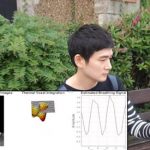 A couple of years ago I wrote about an interesting new technology, called the SNIFFPHONE. It was a breathalyzer device that when connected up to your smartphone analyzed your breath and was able to alert you to any number of possible diseases.
A couple of years ago I wrote about an interesting new technology, called the SNIFFPHONE. It was a breathalyzer device that when connected up to your smartphone analyzed your breath and was able to alert you to any number of possible diseases.
Suffice to say, such capabilities are still nowhere near the mainstream, but a recently published paper in Biomedical Optics Express highlights the progress being made. It documents new software that’s designed to track how fast a person is breathing by using mobile thermal imaging technology. The team believe it could be used to monitor for everything from breathing problems in the elderly to sleep apnea.
“As thermal cameras continue to get smaller and less expensive, we expect that phones, computers and augmented reality devices will one day incorporate thermal cameras that can be used for various applications,” the researchers say. “By using low-cost thermal cameras, our work is a first step toward bringing thermal imaging into people’s everyday lives. This approach can be used in places other sensors might not work or would cause concern.”
The team hope that the technology could have applications beyond ‘merely’ detecting breathing problems. For instance, they believe that the system could one day be incorporated into your daily life, and monitor for signs of stress.
The technology is particularly useful as it can function even in challenging environments, whereas existing technology struggles in low lighting, for instance.
“Thermal cameras can detect breathing at night and during the day without requiring the person to wear any type of sensor,” the team say. “Compared to a traditional video camera, a thermal camera is more private because it is more difficult to identify the person.”
The technology is largely feasible because the price has dropped significantly. Thermal cameras that connect to smartphones can now be bought for around $200.
Smart technology
The system uses AI to detect the ambient temperature and compensate such that the nostrils of the ‘target’ can be tracked, even when they’re moving. What’s more, the algorithms effectively process the breathing signals.
Whilst the system was originally tested in a lab environment, it has also been put through its paces in the field, with participants engaged in a range of breathing exercises whilst the ambient temperature changed. They were also tracked as they walked outside. During these tests, the camera was placed around 25cm from the person’s face using a rig attached to a hat.
“For all three types of studies, the algorithms showed significantly better performance in tracking the nostril area than other state-of-the-art methods,” the researchers say. “In terms of estimating the breathing rate, the tests outside the laboratory showed the best results when compared with the latest algorithms. Although the results were comparable to the traditional breathing belt sensor, for mobile situations our approach seems to be more stable because the belt tends to get loose.”
Whilst the system doesn’t currently work in real time, it is something the team are working on and hope to incorporate in future versions. It will be interesting to see whether this kind of technology becomes something people incorporate into their daily lives.